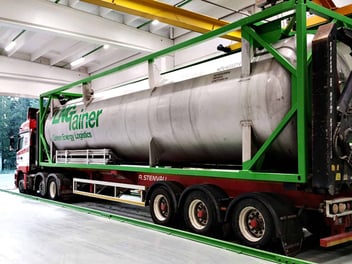How single digital platform strategy transforms companies?
HailerA modern way to run a business is to be data-driven with a transparent and self-organized organization. This is not only enabled by digitalisation, but also by what people value in the workplace nowadays. This means that the divide and conquer-management style is going away fast. The early indicator is that the usual struggles and misunderstandings in organizations have moved from being between individuals to being between departments. When in the ‘90s Lucy didn't like James way of working, organizational friction has now moved to usually being between teams. Do you know the old sales team vs. production team dilemma? Where both believe they are the reason for the companies success, while the other team is hardly pulling their weight.
Are you familiar with the fragmented multiple platforms model?
One final frontier in the transition takes shape in the form of a battle between different systems in a company. Sales, for instance, uses CRM systems, Project managers ERP while an abundance of apps for different purposes is filling everyone’s home screens on their phones. Everyone has their favourites and IT departments are tasked with the impossible job of integrating systems that were never designed to work together in a sometimes hostile environment.
In addition its usually quite expensive, hardly ever-elegant or robust and always restricts flexibility. This puts most, if not all of the pressure on communication tools and applications. A long list of applications, with email at the top, still being the primary one. Unfortunately, this is not a sustainable solution and anyone battling an ever-increasing email inbox can relate to this. Read How to structure your communication
Enable self-organizing with single platform strategy
Self-organizing organizations are practically impossible to run with email, phone, spreadsheets and Monday meetings as soon as the team grows above 2 people. Picture your new startup hiring a new production person so you and your cofounder friend can focus on sales and marketing. Why on earth would you invest in 3 separate systems that isolate you and your teammates?
Enter the era of single digital platform organization
The highest productivity per person can be measured in software development. Here productivity is usually 3-4 times higher than for instance the construction industry. Software developers are doing effective work around 94% of the workday while the equivalent percentage in construction can be as low as 26%.
Benefits of the network effect
This productivity gap can to a large extent be explained by everyone having universal access to all information that is relevant to the success of whatever the team is working on. Software teams have had single digital platforms to manage things for a long time, but now digital platforms are also rising for the rest of us. These platforms are not designed for individual departments but instead, they involve everyone. In fact, they are usually not restricted to employees but they extend beyond the organizational borders to include partners, suppliers, and even customers.
A business platform unites people in an organized way so everyone can spend the maximum amount of time focusing on relevant work. On Hailer, we do this by allowing customers to model processes and data so it matches the way they work and creating a communication layer on top of the processes so hard and soft data starts to pre-exist in the same place. After this as much of the information flow as possible is automated. More about modern collaboration tool benefits.
Boost the productivity
Many pioneering companies are now turning their old integration strategy to a platform strategy. In the integration strategy, several systems are set up for different departments and then integrated in the background. In a single digital platform strategy, the main platform is selected that everyone is on board, while special-purpose tools are kept to the bare minimum.
In a digital platform strategy, the roles of the teams change a bit. IT becomes an enabler rather than a gatekeeper, Leaders can be compared to Influencers- while the workforce can be compared to subscribers or followers on social media platforms. This totally transforms the rules of the game and how companies function. The clearest difference between single digital platform companies and integration companies can be seen in how productive the people are.




